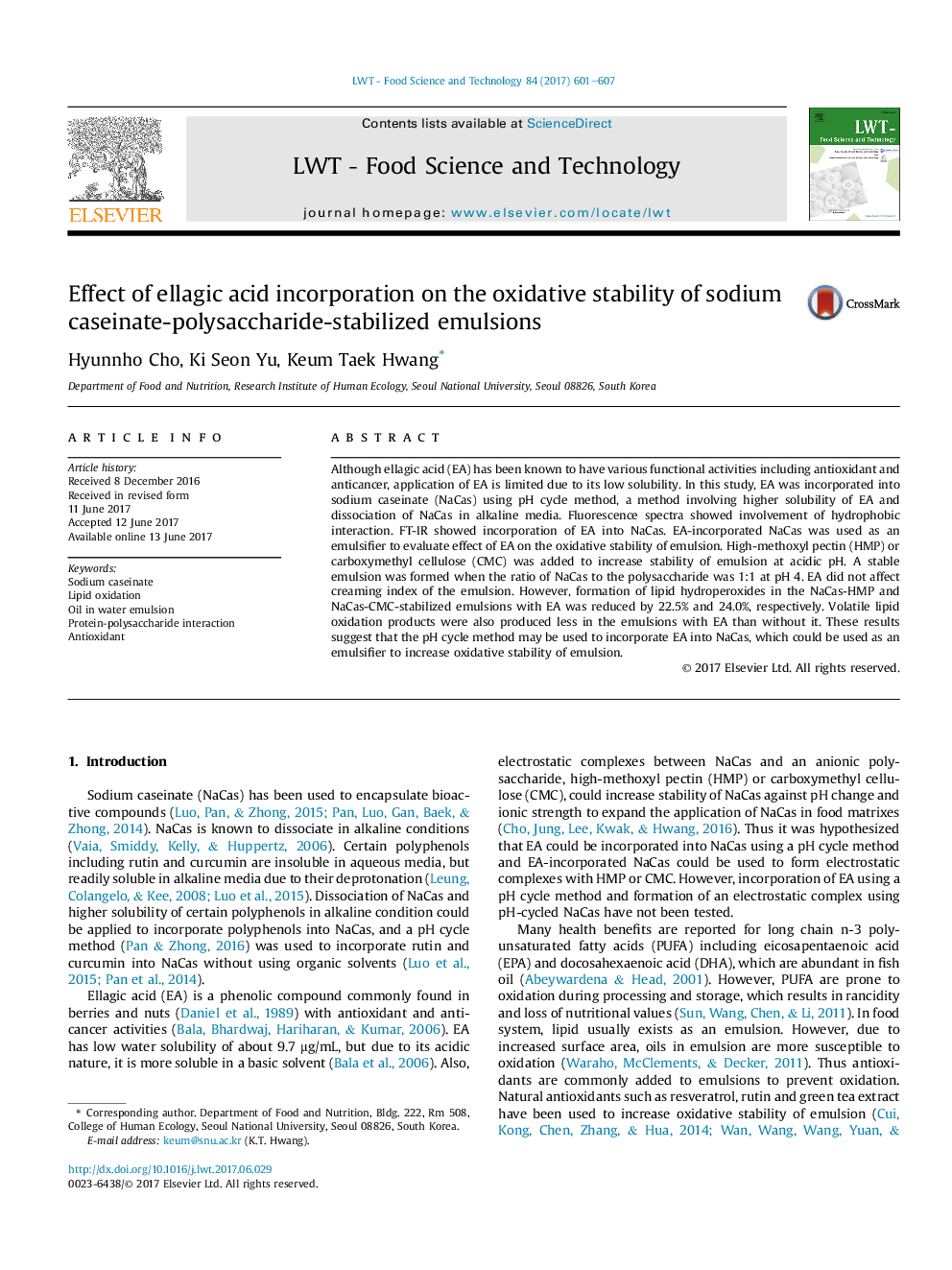| Article ID | Journal | Published Year | Pages | File Type |
|---|---|---|---|---|
| 5768981 | LWT - Food Science and Technology | 2017 | 7 Pages |
â¢Emulsion was formed using sodium caseinate and polysaccharide.â¢Ellagic acid was incorporated into sodium caseinate using pH cycle method.â¢Incorporation of ellagic acid was confirmed by fluorescence spectra and FT-IR.â¢Incorporation of ellagic acid reduced formation of lipid hydroperoxides.
Although ellagic acid (EA) has been known to have various functional activities including antioxidant and anticancer, application of EA is limited due to its low solubility. In this study, EA was incorporated into sodium caseinate (NaCas) using pH cycle method, a method involving higher solubility of EA and dissociation of NaCas in alkaline media. Fluorescence spectra showed involvement of hydrophobic interaction. FT-IR showed incorporation of EA into NaCas. EA-incorporated NaCas was used as an emulsifier to evaluate effect of EA on the oxidative stability of emulsion. High-methoxyl pectin (HMP) or carboxymethyl cellulose (CMC) was added to increase stability of emulsion at acidic pH. A stable emulsion was formed when the ratio of NaCas to the polysaccharide was 1:1Â at pH 4. EA did not affect creaming index of the emulsion. However, formation of lipid hydroperoxides in the NaCas-HMP and NaCas-CMC-stabilized emulsions with EA was reduced by 22.5% and 24.0%, respectively. Volatile lipid oxidation products were also produced less in the emulsions with EA than without it. These results suggest that the pH cycle method may be used to incorporate EA into NaCas, which could be used as an emulsifier to increase oxidative stability of emulsion.
